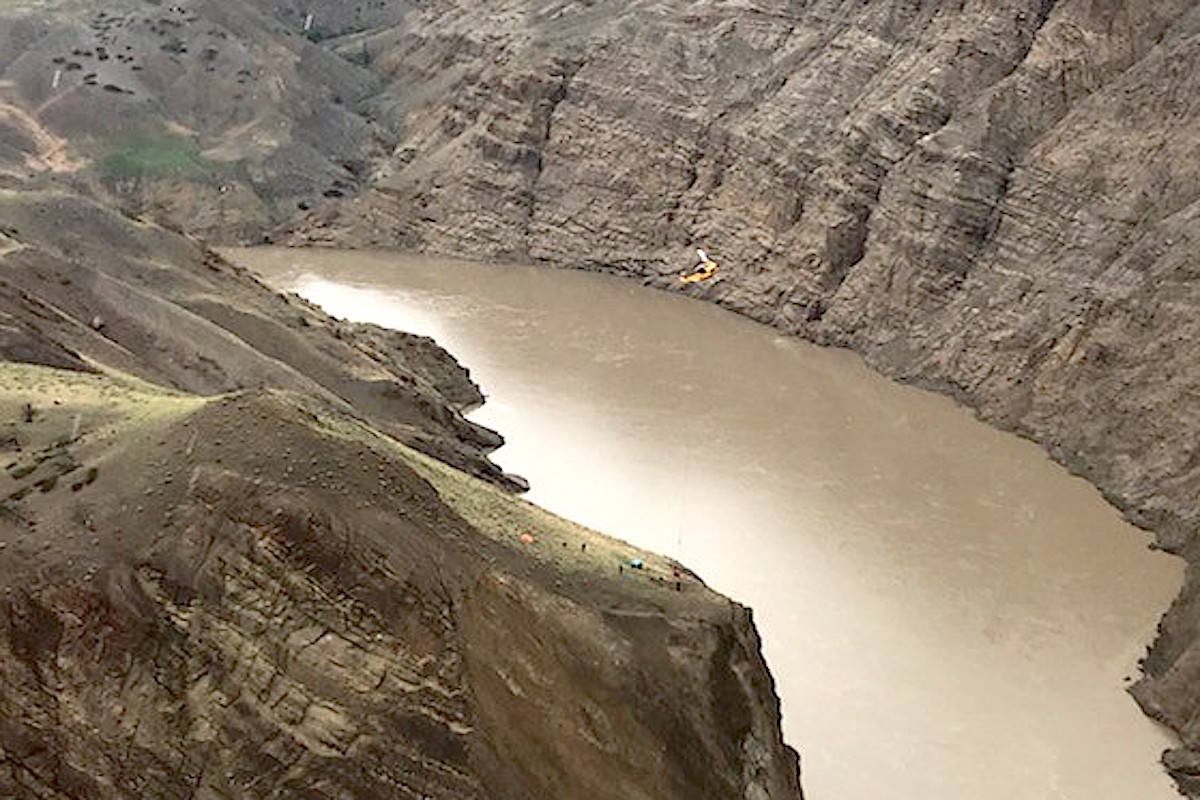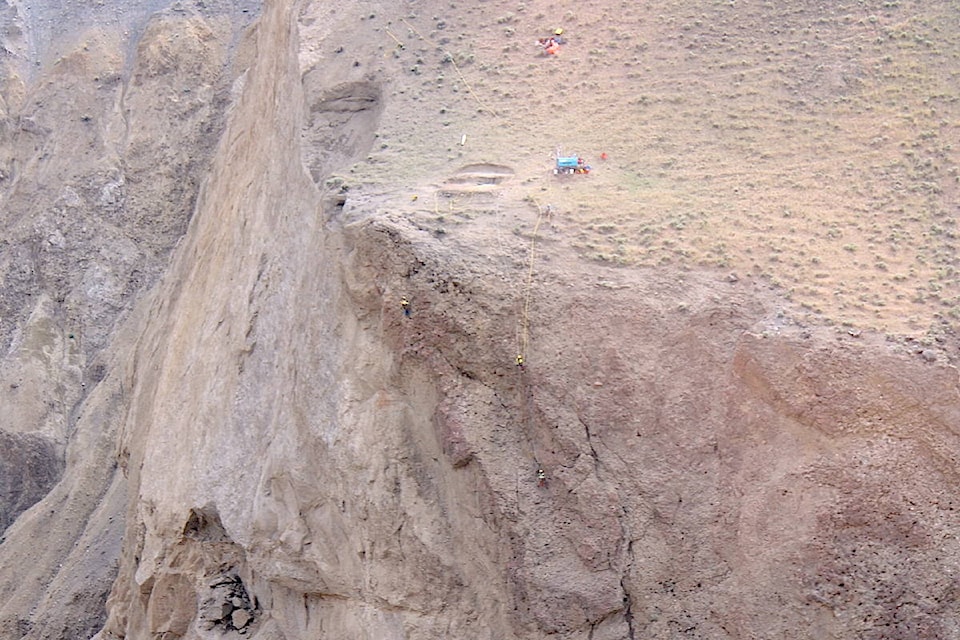Swift action is required to save salmon blocked by a rockslide in the Fraser River near Big Bar, said Fisheries and Oceans Canada officials.
Critical runs of spring and summer chinook, and several runs of sockeye salmon are among those trapped.
Removing the blockage, extricating fish by truck or helicopter, or employing a fish transport mechanism, are some of the innovative options being considered by experts.
READ MORE: Focus on freeing the fish
At the same time, efforts to remove the massive rock slide in the river are being severely hampered by challenging conditions such as the remote and unstable location where there are no roads, with steep slopes and dangerous, churning water.
Rock scalers recently chipped away at the rock face of the canyon cliffs to remove large sections deemed unsafe.
But federal and provincial officials with the the Unified Command Incident Management team said action to will not be taken to remove any trapped fish until rock stability is confirmed and the river bank directly below the slide is deemed operable.
The slide in the Fraser near Big Bar, northwest of Kamloops, was discovered by officials in June but likely happened last fall. It created a big barrier to fish passage and is still blocking all but the largest chinook trying to migrate upriver.
A new size limit for chinook salmon was announced by DFO officials at technical briefing Friday. The fisheries management measure is specifically aimed at chinook retention in the marine areas by anglers, and it came into effect on July 15.
“This will help avoid impacts on larger at-risk Fraser Chinook that are having greater success migrating past the landslide,” said Andy Thomson, regional DFO director, management branch.
Thomson said the “emergency measures” taken July 12 by DFO represent “an unquestionably difficult decision” in terms of impacts to First Nations, as well as recreational fisheries.
“However, the potential for permanent loss of these chinook populations represent a greater threat to the livelihoods of all those who depend on salmon for sustenance and economic opportunity as well as for the wildlife that depend on them as a food source,” Thomson said.
“Only a small percentage of spawning salmon are able to get over (it) and reach spawning areas,” Thomson said.
That makes it imperative that they take “swift action” to save as many salmon as possible.
They don’t know exactly how many are stuck behind the obstruction because high water is hampering monitoring efforts, but they estimate migrating chinook numbers to be in the tens of thousands, while the sockeye salmon stocks could be in the millions.
The maximum size limit of 80 centimetres for chinook was the emergency measure they decided on, with a reassessment to be undertaken by July 31 to see how successful it has been.
“At the end of July, the vast majority of the at-risk Fraser Chinook should have migrated past these areas into the Fraser River.”
READ MORE: FN calling it ‘extreme crisis’
The First Nations Leadership Panel, comprising reps from DFO, FLNRORD and First Nations leaders from the Fraser River watershed and river approach area, is considering fish passage mitigation options.
A Strategic Steering Committee, which includes senior leaders from both DFO and FLNRORD, is providing direction and oversight to the onsite team as well.
DFO is working with impacted First Nations to minimize chinook harvests above the slide site to allow as many fish as possible to reach the spawning grounds. The emergency measures announced Friday will be in effect for recreational fisheries off the West Coast of Vancouver Island and the Northern Strait of Georgia.
@CHWKjourno
jfeinberg@theprogress.com
Like us on Facebook and follow us on Twitter.

